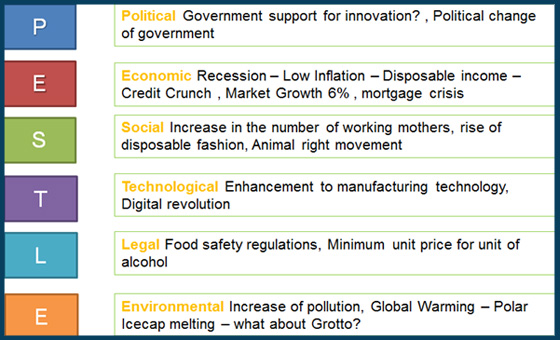

Every company has a vision that helps them to rise into an obsession and make a business a movement. And, the company’s strategies are powerful forces to achieve this vision. Also, we know business changes are inevitable. These Business changes may occur both in the internal and external business environment.
Now the question is – what is needed to address these business changes?
Keep refining business strategies. And, ridiculously fit fast to achieve the company vision.
Here, the next question is – what is the trigger and cue to refine these business strategies? Organizations keep assessing their external and internal business environment. These assessments give vital information about –
What we need to stay tuned with updated business soundings.
Organizations use many tools to assess – both the external business environment and internal capabilities & limitations. PESTLE analysis is one of them to assess external business environment. We use it to analyse the global business environment. We call the global business environment within which:
PESTLE is an external environmental study tool to investigate external business factors. These factors are, in general, out of control to the businesses. And, the study of these business factors results either in
These external influencing factors are vital information to develop and/or refine strategies in order to stay within Vision, Mission, Goals and Objectives of the organization.
Here, a Business Analyst may be involved in:
The basic PESTLE analysis includes 6 key areas:
The following section deepness each of the key areas of PESTLE analysis:
1. Political: These factors come from government influences. Here we investigate the degree to which a government may influence a business environment.
Like, a political change may introduce many influences. For example, the government may add a new tax. That may change the entire revenue generation structure of an organization. An example of political factors may also include:
Great Depression in India is an excellent example of political factors. The Government of British India introduced a trade policy, caused considerable damage to the Indian economy. During the period 1929–1937, exports and imports fell drastically. And, railways & the agricultural sector were the most affected.
2. Economics:These factors are related to the economic performance of the country. Which have long term impacts due to its direct effect on businesses – Such as a rise in the inflation rate, which may have an impact over
And as a result, change demand-supply model for that economy. Sometimes economic impacts have worldwide effects.
The subprime mortgage crisis affected many organizations. And as per Wikipedia, the crisis had severe, long-lasting consequences for the U.S. and European economies. The U.S. entered a deep recession, with nearly 9 million jobs lost during 2008 and 2009, roughly 6% of the workforce.
Another example of economic factors could be:
All these factors determine the direction in which an economy might move. And, organizations study these factors based on their environment. And, develop strategies based on the identified changes that are about to occur.
3. Social: Every culture has a unique mindset. And, that uniqueness cast an impact on businesses and sales of their products and services. Organizations need to study:
And, that is very important to develop strategic long term plans.
For example, a rise in disposable fashion introduces:
4. Technological: Businesses need to integrate technological development to stay connected along the way. For that, companies investigate:
How consumers are reacting to technological trends and using for their benefits.
For example, the technological revolution may open new doors to technological trends. This revolution may produce opportunities for many businesses. And, the companies which are unable to integrate these new trends face enormous threats.
5. Legal: The legislation’s change from time to time and affect many businesses, such as labor law, food safety law. Organizations need to make sure legal compliance’s. And, sometime it need change in strategies.
For example, the minimum unit price of alcohol may introduce threats to the organization, which is selling with a higher price of the minimum unit price. And, business pressure could enforce them to lower the prices.
6. Environmental: These factors come from the natural environment. And, affect certain industry like farming, agriculture. Example factors could be an increasing concern in packaging and pollution.
These investigations are consolidated in the PESTLE analysis. It is normally performed in a workshop which may be facilitated by Business Analyst. In this workshop, representatives from a range of factors are involved and brainstorm:
How all of the identified factors affect each other and provide specialist information.
It is recommended that before conducting the workshop:
These specialists investigate, research reports related to their concerned areas.
In conclusion, PESTLE analysis is performed to understand external environmental factors to consolidate Threats and Opportunities. These factors are out of control to the businesses and need to be taken care in strategic input.
You can watch and listen to the live video presentation on PESTLE Analysis here:
I hope this blog has sufficiently answered your all queries related to PESTLE Analysis. Good Luck for your PMI-PBA® Certification Exam. Our online course is one place which has everything to crack the exam in the first attempt. The course also gives you end to end 24/7 trainer assistance.
You can share your queries and feedback on our discussion Forum. You can also log into our YouTube channel watch the video on the same
Enroll to our FREE PMI-PBA® Introductory Program to learn more about PMI-PBA® certification
| Name | Date | Place | – |
| PMP Certification and Training | 18 Apr – 17 May 2024 | Pune | More Details |
| PMP Certification and Training | 4 May – 2 June 2024 | Chennai | More Details |